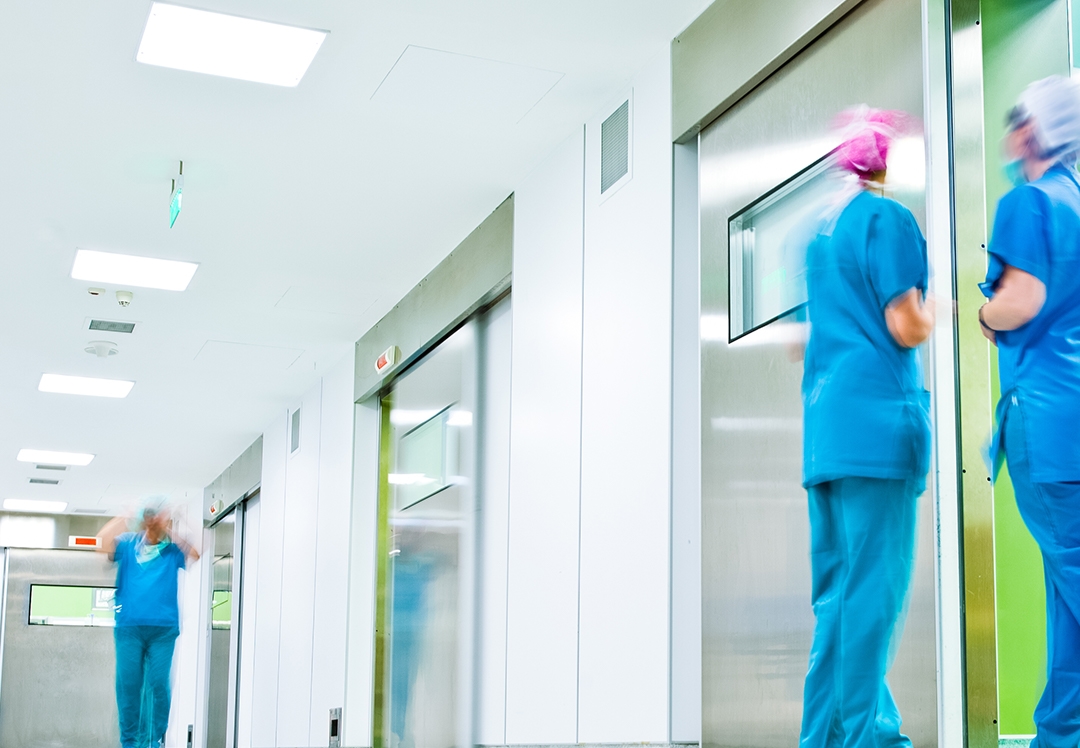Benefits of LEDs in Healthcare Facilities

Hospitals and healthcare facilities utilize a significant amount of energy to ensure a safe and comfortable environment for patients, staff and visitors. Balancing demands to reduce operating costs, meet stringent sanitation and safety standards and provide a healing patient experience can pose a challenge for hospitals and healthcare facilities. Energy bills for healthcare facilities can be high, specifically in hospitals open 24 hours every day. To streamline efficiencies, reduce operating costs and increase revenue, many are making the switch to LED technologies.
Advancements in LED lighting and control systems are making it easier to significantly cut lighting-related energy and maintenance costs while also enabling modernization and further development of facilities. According to Business Energy Advisor, a standard hospital in the United States could use roughly 31.0 kWh of electricity per square foot. Lighting, space and water heating were found to represent approximately 65 percent of the total energy use, and the lighting portion of this presents a great opportunity for energy savings. By implementing certain LED technologies, hospitals have the potential to save money, become more energy efficient, and enhance the overall environment.
Energy and Maintenance Saving Benefits
LEDs positively impact hospitals and healthcare facilities through benefits including cost, maintenance and energy savings. Unlike fluorescents or metal halides, LEDs can reduce energy use by up to 70 percent and have a longer lifespan of up to 100,000 hours. In addition to this extended lifespan, several LED providers tend to offer a 10-year warranty; hospitals and healthcare facilities are guaranteed a product will last 10 years minimum. However, depending on how often a product is used, it could last even longer.
LEDs are made from durable, glass-free and mercury-free material. This does not require a costly recycling process, which allows hospitals and healthcare facilities to also save on recycling and disposal costs. Overall, energy and maintenance savings can lead to short payback periods. Following the payback period, the savings can be allocated to other areas throughout the hospital.
The Efficiency and Impact of Controls on Patient and Staff Comfort
Without a doubt, it is important for healthcare facility managers to consider lighting’s impact on patient health and how it can be achieved. In addition to cost, energy and maintenance savings, LEDs can provide a healthier and more comfortable environment for patients and staff. A balance between lighting that is best for us biologically and what is best for visual acuity is necessary, which can sometimes be challenging to create. Doctors, nurses and staff require high-quality, bright light in order to provide proper care and operate efficiently. Patients on the other hand, fare better with lighting that best supports their circadian rhythm and promotes an environment suitable for rest.

LEDs offer real-time tunability and controllability, which helps hospitals find a balance that is just right for them both at the time of installation and as lighting demands change for future needs. Two of the most important tuning capabilities that LEDs provide which drastically impact light output are the Correlated Color Temperate (CCT) and the Color Rendering Index (CRI).
Modification of CCT is what strikes that balance between comfort and biological impact. Studies have found that 6,000K-8,000K LEDs with a blue spectral focus have the greatest biological impact, while 3,000 K-5,000K LEDs and ones closer to ‘daylight white’ were deemed the most visually pleasing. By tuning their LEDs, hospitals can adjust to whichever is most comfortable for the patients and staff. In addition, doctors and nurses require lighting with high values on the Color Rendering Index (CRI) scale. The scale measures 1-100 and the higher the number on the scale, the greater visual acuity. While fluorescents deliver around 52 to 75 CRI, LEDs offer a CRI of at least 80, some offering greater than 90.
Using Networked Controls to Reduce Energy and Maintenance Costs
Controls not only benefit patient health, they can also have an impact on operational efficiency and reduce costs associated with energy and maintenance. Networked controls and smart fixtures can provide a clearer understanding and look into facility operations, allowing staff to quickly and more effectively identify areas for improvement within maintenance and energy management. Internet-based networks allows these smart fixtures to share information in real-time on operational status or maintenance issues throughout a facility, relaying information on general energy use, LED wattage, and damaged or burnt out lighting. Going beyond monitoring solely for lighting, LED smart fixtures are now showing potential for use in other forms of general hospital maintenance. For instance, when a patient checks out, these fixtures can act as a beacon signaling to staff members that turnover and cleaning is needed.
There is also a greater opportunity for savings by tailoring energy use within certain areas using controls that are either global or localized. Global controls connect larger sections of the facility as a whole and can help with general energy use. It can even be as simple as adding a timer to increase patient safety and wellbeing with proper lighting and controls. Meanwhile, localized controls can focus on individual rooms and locations. Localized controls based on occupancy, time and external light levels make energy use within certain areas of the facility more precise.
Over the years, LEDs have become the preferred solution for hospitals and healthcare facilities. These solutions can effectively and efficiently ensure the goal of safety and comfort for patients, visitors, and staff, while saving money. Due to the long lifespan, high-quality, and detailed control options, LEDs make cost savings doable and significantly easier.
Stephen Kerins is Regional Director at Tri-State LED, a division of Revolution Lighting Technologies.
